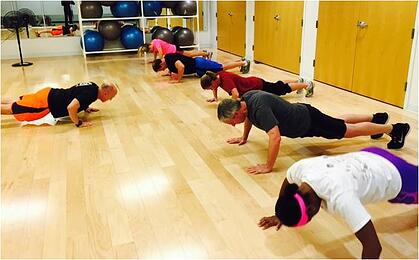 NIFS isn't the only agency that provides fitness management expertise to businesses. There are several like us because the market demands it. While many organizations have adopted a DIY attitude about managing their own fitness programs, an additional (and substantial) set of businesses has recognized the value in outsourcing fitness center management for their corporate fitness center or in their senior living community.
NIFS isn't the only agency that provides fitness management expertise to businesses. There are several like us because the market demands it. While many organizations have adopted a DIY attitude about managing their own fitness programs, an additional (and substantial) set of businesses has recognized the value in outsourcing fitness center management for their corporate fitness center or in their senior living community.
We’ve been at this for almost 25 years and I’ve heard a variety of objections to outsourcing fitness staff. I’ve got my own list of objections to those objections...so here we go:
Objection 1: Outsourcing fitness center management is too expensive.
This objection really comes down to a comparison of direct versus indirect employee costs. Working with a partner may be more expensive when you compare wages and benefits you pay your employee with the billing you would get from a partner. The fitness management organization has overhead and a margin they need to earn.
When you look at the cost to hire, train, and supervise an employee, your cost comparison starts to even out. Then throw in the consideration of ongoing training and supervision, potential turnover, and statutory costs related to employees, you may find that partnering with a staffing agency like NIFS provides significant value.
Objection 2: I have no control over the staff person.
I don’t know who you’ve worked with historically, but any organization in this business that doesn’t put service first and foremost is making a gigantic mistake. When you’re working with the right outsourcing partner, that organization should be keenly interested in keeping you, the client, happy. To that end, they should be very interested in your feedback about the strengths and weaknesses of the staff they’re providing at your location.
Objection 3: An outsourced staff person won’t have buy-in from our constituents.
For starters, see objection #2. Keep in mind that the only way a staffing agency stays in business is if they have learned to be nimble and highly adaptive to a variety of environments. You can check on a potential outsourcing partner’s flexibility by talking to a variety of references.
When we go to work in senior living settings, we often pair up staffing services with wellness consulting (at no additional cost) so that we can better support the organization and further understand the culture with that client. This understanding is communicated to our staff on the ground so that we’re all operating from the same educated starting point.
Objection 4: Fitness isn’t rocket science; we’ve got this.
Okay. You’re right. Fitness isn’t rocket science, and you may very well “have it.” There are a host of highly capable, service-minded, passionate health and fitness professionals out there who are ready to work directly for you. But who has their back?
Who provides them with fresh ideas, resources, direction, and support? Your human resources director? Your activities director? Not likely—unless you’ve somehow hit a gold mine of fitness-educated staff at your business, the fitness manager you employ is probably the only one of his or her kind in your four walls. Outsourcing partners (the best ones, anyway) bring a team of resources, professionals, expertise, and support to the staff member they provide your organization.
Maybe you have other objections I can address. If so, leave them in the comments below. On the other hand, if I’ve just addressed your objections and you’re ready to start looking at outsourcing partners, drop me a line, or take a closer look at us through the rest of our blog. If your business has to move through an RFP process, you might want to read what I wrote on my top 10 RFP questions for corporate fitness management.
CORPORATE FITNESS STAFFING ›SENIOR LIVING FITNESS STAFFING ›




 One of the ways they work on achieving specific participation numbers is through successful programming. It’s not rocket science, but you do have to know your members and understand what works with them in order to build effective programs. That’s why our crew is so focused on
One of the ways they work on achieving specific participation numbers is through successful programming. It’s not rocket science, but you do have to know your members and understand what works with them in order to build effective programs. That’s why our crew is so focused on 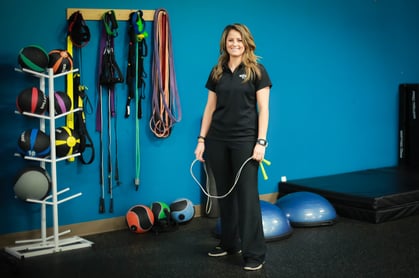 Sometimes employers go all in on their investment in a corporate fitness center. Thousands of square feet are dedicated to treadmill upon treadmill, thoughtful changing facilities, ample group exercise space, creative equipment solutions, and around-the-clock dedicated fitness staff.
Sometimes employers go all in on their investment in a corporate fitness center. Thousands of square feet are dedicated to treadmill upon treadmill, thoughtful changing facilities, ample group exercise space, creative equipment solutions, and around-the-clock dedicated fitness staff. 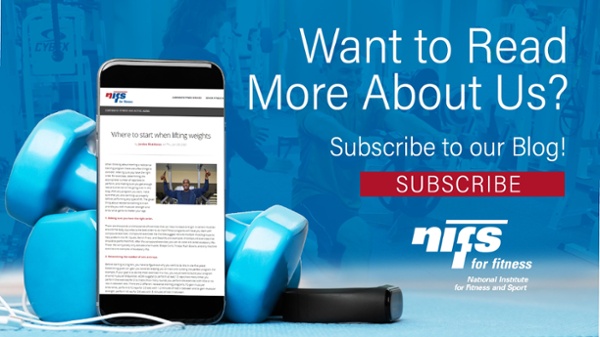
 One of the outcomes we saw from that program was that a lot of the participants did not exercise in the corporate fitness center during the initiative, and frankly, that was by design. We were mostly interested in supporting and inspiring employees to achieve 150 minutes of activity each week, so we eliminated the “must be accomplished in the corporate fitness center” barrier by allowing participants to log any activity accomplished anywhere. After all, the primary job of our fitness center managers and health fitness specialists is to get employees moving. If it’s activity in the corporate fitness center, even better. But with today’s frantic schedules, we’ll take any movement, anywhere, anytime.
One of the outcomes we saw from that program was that a lot of the participants did not exercise in the corporate fitness center during the initiative, and frankly, that was by design. We were mostly interested in supporting and inspiring employees to achieve 150 minutes of activity each week, so we eliminated the “must be accomplished in the corporate fitness center” barrier by allowing participants to log any activity accomplished anywhere. After all, the primary job of our fitness center managers and health fitness specialists is to get employees moving. If it’s activity in the corporate fitness center, even better. But with today’s frantic schedules, we’ll take any movement, anywhere, anytime.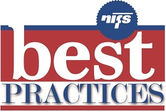

 According to a study published in the
According to a study published in the 
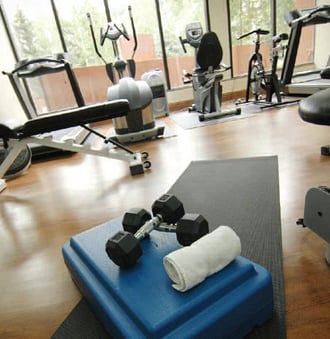 When a business makes the commitment to put in a corporate fitness center, they are making a statement (hopefully one of many) about how important their employees’ health is. It’s a substantial investment, and the project is not to be taken lightly.
When a business makes the commitment to put in a corporate fitness center, they are making a statement (hopefully one of many) about how important their employees’ health is. It’s a substantial investment, and the project is not to be taken lightly. 
 Management Doesn’t Support Staff Taking Their Break Time to Work Out
Management Doesn’t Support Staff Taking Their Break Time to Work Out
 Costs for care, costs for absenteeism, vendor costs, the cost of doing nothing…there has been a lot of chatter and posturing online recently about this information as it relates to corporate wellness. In case you’re not quite up to speed on all the cost-related information, here’s an
Costs for care, costs for absenteeism, vendor costs, the cost of doing nothing…there has been a lot of chatter and posturing online recently about this information as it relates to corporate wellness. In case you’re not quite up to speed on all the cost-related information, here’s an 